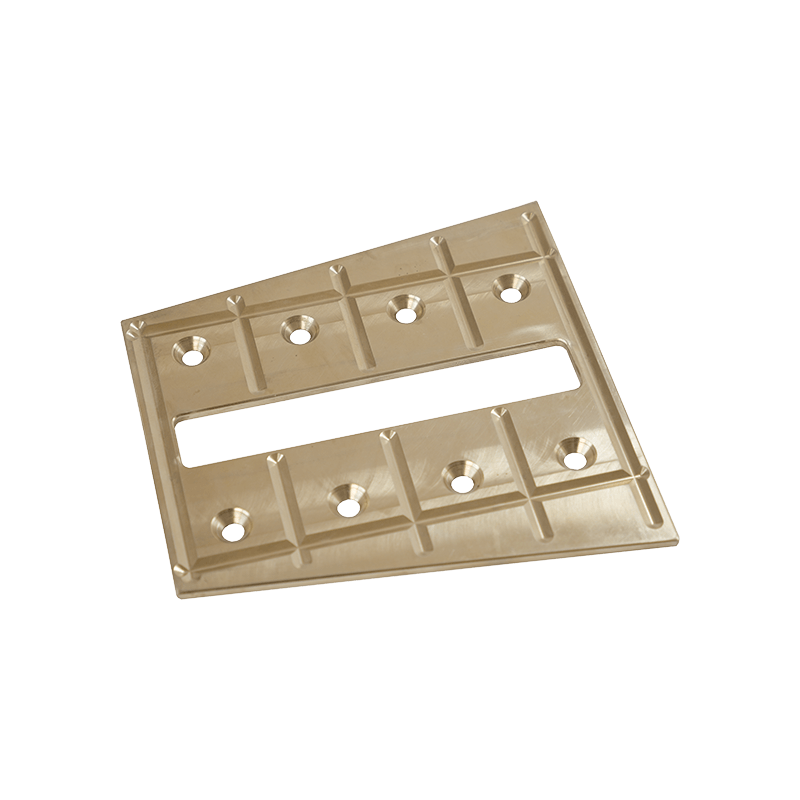Different types of Copper Alloy Series have significantly different electrical and thermal conductivities in the electrical and electronic fields. Therefore, it is often necessary to balance electrical conductivity, mechanical strength and corrosion resistance in applications to meet diverse needs.
The electrical conductivity of pure copper is in a leading position among metal materials, with a conductivity of 100% IACS (International Annealed Copper Standard). It is suitable for electrical equipment that requires high conductivity materials, such as busbars, cables and terminal blocks. The thermal conductivity of pure copper is also very high, usually around 400 W/m·K. This makes it ideal for electronic devices that require rapid heat dissipation, such as heat sinks.
Brass has a low electrical conductivity, around 28%-37% IACS. Although not as conductive as pure copper, it has higher mechanical strength and lower cost, so it is often used in applications requiring moderate conductivity, such as switches, plugs and sockets, etc. Brass has a medium thermal conductivity, about 120-150 W/m·K, which performs well in situations where moderate heat dissipation efficiency is required (such as medium-power electronic component housings).
Bronze has a lower conductivity than brass, about 15%-20% IACS. Although its electrical conductivity is low, its hardness and wear resistance are high, and its corrosion resistance is excellent. It is suitable for contactors, slip rings, etc. that require high durability. The thermal conductivity of bronze is also low, between 60-80 W/m·K. Although its thermal conductivity is not as good as pure copper and brass, due to its excellent corrosion resistance, it is widely used in high-load electrical contact parts that require wear resistance.
The electrical conductivity of white copper is low, usually 5%-15% IACS, and its electrical conductivity is much lower than that of pure copper. Therefore, it is mostly used in the electrical field for applications where corrosion resistance requirements are higher than conductivity requirements, such as electrodes and cable connections that are resistant to seawater corrosion. pieces etc. The thermal conductivity of white copper is poor, between 30-50 W/m·K, and is suitable for use in scenarios where corrosion resistance is required but heat dissipation requirements are not high.

The electrical conductivity of beryllium copper is 20%-60% IACS. It has relatively high electrical conductivity and excellent strength and elasticity. It is an ideal choice for electronic fields that require both strength and conductivity. It is often used in connectors and microelectronics. Contact shrapnel. Beryllium copper has a moderate thermal conductivity of approximately 200 W/m·K. Its good thermal conductivity and strength make it very popular in situations where high precision and wear resistance are required, such as integrated circuit connectors.
Copper-chromium-zirconium alloy has high electrical conductivity, which can reach 75%-85% IACS. It performs particularly well in terms of high temperature resistance and high conductivity, making it suitable for high-power electrical applications such as welding electrodes, grounding terminals, etc. The thermal conductivity of copper-chromium-zirconium is also excellent, about 300 W/m·K. This type of alloy is widely used in high-load electrical components that require stable heat dissipation due to its high temperature resistance and good thermal conductivity.
Phosphor bronze has moderate electrical conductivity, approximately 15%-20% IACS. Although its electrical conductivity is low, its wear resistance and fatigue resistance are good, making it suitable for manufacturing electrical components with high durability requirements, such as connector springs and switch components. Phosphor bronze has a thermal conductivity as low as 50-70 W/m·K and is suitable for applications where mechanical strength and fatigue resistance are high, while thermal and electrical conductivity are not the main requirements.
The copper alloy family has a wide variability in electrical and thermal conductivity, which makes their applications in the electrical and electronic fields very diverse. Pure copper and copper-chromium-zirconium alloys are suitable for applications with high electrical conductivity and high heat dissipation requirements, while brass, bronze, etc. are suitable for applications with high mechanical strength requirements and relatively low electrical conductivity. Beryllium copper is widely used in precision electronic components due to its high strength and elasticity. Finding a balance between electrical conductivity, thermal conductivity and mechanical properties based on application requirements is key to copper alloy selection.

 English
English Deutsch
Deutsch Español
Español русский
русский

 +0086-513-88690066
+0086-513-88690066




